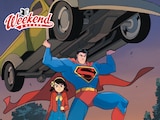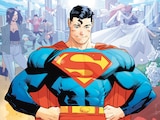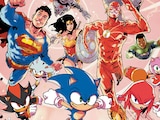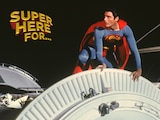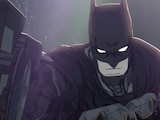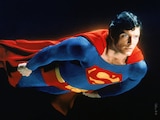Vertigo Comics was launched in 1993 as a venue for comic books and graphic novels that are edgier and more sophisticated in nature. Since its beginning, it has been home to some of the most acclaimed comics to come out of the medium—The Sandman, Fables, Y: The Last Man, Preacher, Transmetropolitan…The list goes on and is growing by the year.
2013 is a big year for Vertigo Comics. In addition to celebrating its 20th Anniversary, Vertigo is also publishing a series of new comics featuring some of their biggest stars talent. Some of these, such as The Wake, Trillium, FBP: Federal Bureau of Physics, Hinterkind and Astro City, have already seen print. Others, including the highly anticipated Sandman: Overture, will hit shops later this year.
In consideration of all this, I spoke with Vertigo Executive Editor Shelly Bond and Vertigo Group Editor Will Dennis about Vertigo’s important role in comics, both where it’s been and where it’s going. I sat down with them recently, encouraging them to discuss any aspect of Vertigo’s past, present or future they felt like, occasionally throwing in a question or comment of my own where it seemed appropriate. The result was the following interview, which we’ll be publishing in three parts here on VertigoComics.com.
The first part deals largely with Vertigo’s past. Enjoy!
Shelly Bond: So, Will, I thought it might be fun to get started by asking you, out of all the comics that I’ve edited, what’s your favorite and why?
Will Dennis: My all-time favorite comic of yours is probably Scene of the Crime by Michael Lark and Ed Brubaker. I wasn’t even working at Vertigo at the time when that came out, so I bought it in the shops.
SB: So you were a fan of mine way back then?
WD: That’s right! I remember it was on my pull list at the shop I was going to on 23rd Street. I remember buying the first issue of 100 Bullets there too, and then within a year, I was editing the book.
Tim Beedle: So you weren’t the first editor of 100 Bullets?
WD: No, no. I took over around issue #21. It was the “loser cover.” That’s what we called it. Dave had done a cover of this guy’s face, but he had made a rubber stamp that said “loser” and he stamped it like a thousand times to make a face, so the guy had what looked like a beard and there was this red gun on his forehead. Yeah, that was the first issue that I edited.

100 Bullets #21's "Loser Cover"
WD: I was in Argentina recently visiting Eduardo Risso, he had a fax that I had sent to him, and it said something like, “Dear Mr. Risso, you don’t know me but my name is Will Dennis and I’m now the editor of your book.” *laughs*
It sounds so old now, but we did everything by fax. I would fax him stuff and he would fax the pencils in and I would blow them up on the Xerox machine to fit the size of the board and then I’d balloon them and Clem Robins would letter them on vellum overlays. It was such an incredibly different hands-on kind of process then, and it really wasn’t that long ago.
SB: No, it sounds archaic when you’re talking about it, but it wasn’t that long ago. The industry has changed so much and technology has changed so much that the way we do things now, we can get things done so much more quickly and efficiently.
WD: I remember when the pitch for Fables first came in. I was assisting you at that point. I’ll never forget that.
SB: It was in 2000.
WD: It was one of those things where you just knew it was going to work out. When you see things like that, it’s almost automatic.
SB: You just know.

Fables #1's now iconic cover
TB: Did you think it would still be running this long after you first got that pitch?
SB: Absolutely, knowing Bill Willingham’s talent. I started working with him in 1988. I was not into super heroes and The Elementals was the first book that actually made me respect what you could do with the super hero trope, and actually make it cool and different. So I knew once I got to DC that I was going to look him up again.
I honestly thought Fables had the legs to go on and on because of the canon it pulls from. Everyone’s familiar with fables, fairy tales and folklore, and knowing that it was in the hands of someone like Bill, who’s so clever.
WD: Yeah, even at the beginning he had all these ideas about how we can pull from Japanese folklore, from European or Native American. He knew that it was limitless in the sense of the source material so it was really only going to be limited to his own imagination.
SB: It was such a broad scope, but I think also what made it work is that sometimes when you have a concept that’s that big, you still need to narrow the focus. You still need one or two core characters that are going to drive it. So it really was about Snow and Bigby, at the very beginning, and then it branched out. But the fact that he’s been able to cover such a vast cast and make them all distinctive—you know all of the women are the most beautiful women from their respective homelands. Yet, they’re drawn very differently and they speak very differently. Each one has a particular cadence. You can’t mistake one for the other. That’s talent.
WD: The women all have really individual personalities none of which end up being stereotypical. I don’t think the book really gets enough credit for that. People are always complaining about how there aren’t enough female characters in comics, and here Fables has this huge cast of all these incredibly interesting, strong, three-dimensional female characters.
Sometimes if things are so incredibly well done and good, you almost take it for granted because it’s not calling attention to itself. It just sort of does its thing and does it really well.

The women of Fables are so strong that they eventually demanded a new series devoted entirely to them--Fairest.
SB: Month in and month out. And I think that says a lot not only about Bill and his craft, but also about the rest of the team.
WD: Yeah, with Fables I’ve had so many writers tell me, “Why didn’t I think of that?” It’s one of those moments where as a writer and creator, you’re kicking yourself. And our new books are like that too.
We see a lot of different things, so the question is always why do you pick this one over that one? Well, this one has an element to it or a layer, some richness to it that you just don’t see in the ten other ones you’ve been pitched that are like that.
SB: The timing is critical too. Sometimes people pitch us things that are part of a genre—for instance, we go through phases with zombies, vampires and werewolves. So it’s interesting when someone pitches us something that’s not quite as common and that gives us a really interesting twist. Something that’s unconventional.
We’re really selective because I think we’ve earned the right to be. For the Vertigo label to be on a book, it has to go through some serious tests for us. Our readers are very selective and we want to make sure we live up to their expectations too. So that’s why we work really closely with our teams. I think that’s one of the things about Vertigo that’s terrific. We really pride ourselves on cultivating writers and artists and bringing in new, young, talented people, and sometimes pairing them up with pros. There’s nothing greater than finding that veteran—like a Peter Milligan or a Mike Carey—uniting them with someone out of art school who shows a lot of promise, and bringing them together so we can all work as a team. That’s the most gratifying thing about being an editor, in my opinion.
WD: A lot of people aren’t prepared for how highly collaborative it is, but I’ve always had the experience that when a project is done, whether it’s a writer from outside or a novelist… They’re always a little shocked at how collaborative it is in terms of looking at the pencils, seeing the inks and colors, working over the dialog once we get it lettered and all the stages the book goes through.
SB: It starts with a tiny germ of an idea and it grows, and sometimes it’s the editor and the writer that bring it to life, and oftentimes when the artist comes in he or she also brings pieces to it that you never know were there, and it becomes this tremendous team effort.
WD: Yeah, that’s always shocking. You’ve been working with a writer for ages and then suddenly you send it off and you get that first round of drawings. I still get goosebumps when I see them. I know it sounds corny, but it’s true.
SB: No, you do. Even when you first get character sketches.
WD: Yeah, 24 hours ago it was just words on paper, but suddenly you see these characters and world. I’m always in awe of the artists. It’s like, how can you read what’s in the writer’s mind? When it comes together like that, it’s the greatest thing. You can’t believe how satisfying it is.
SB: It is. And it’s the greatest kind of storytelling there is, in my humble opinion. I’ve always thought being a comic book editor is the greatest job that no one in the world knows about!
Click here to read the second part of my interview with Shelly Bond and Will Dennis.

